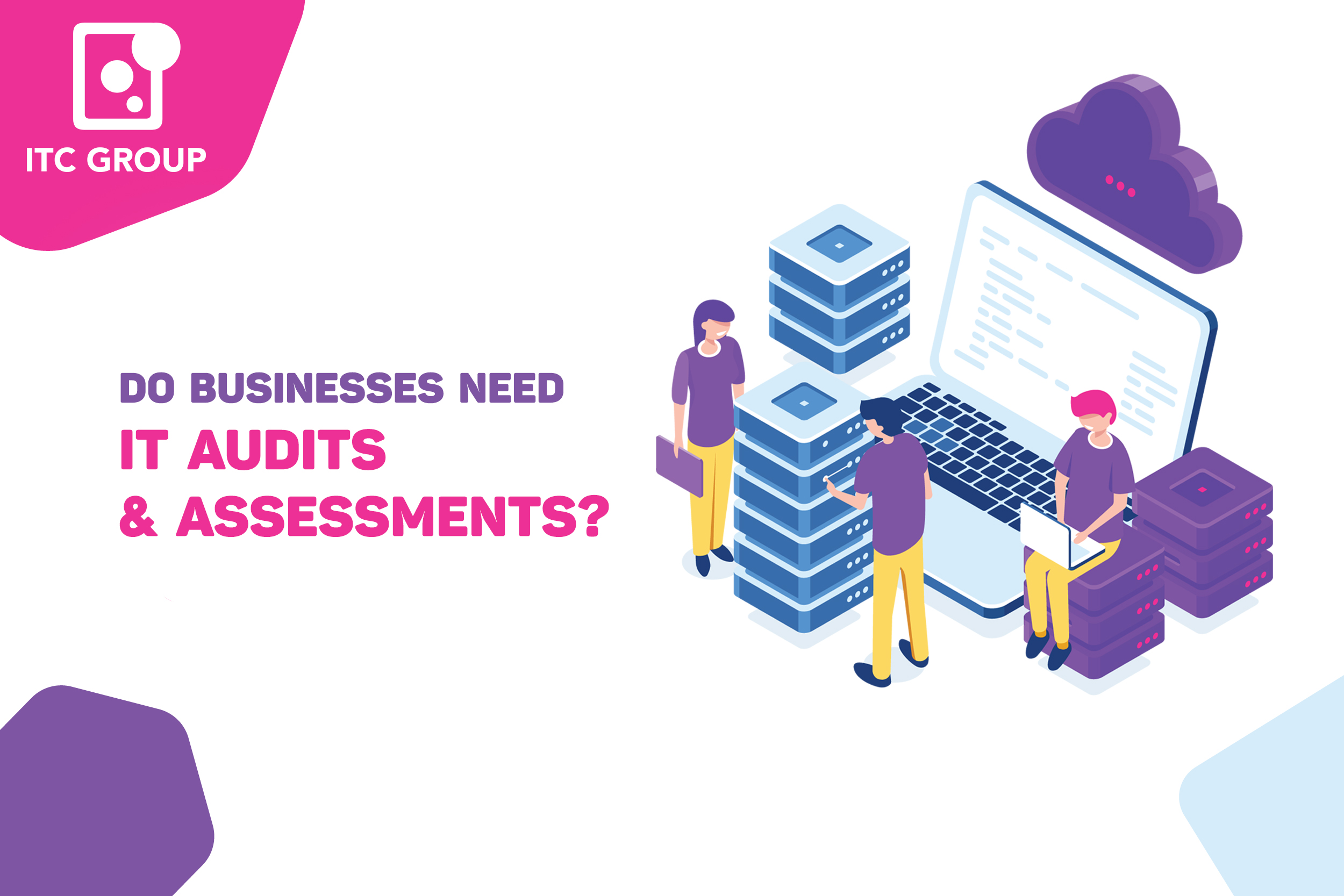









As digital transformation is no longer new, most businesses are now able to apply modern technology to all their business processes from data storage, communications, sales, and management to daily office stuff (timekeeping, announcements, documents,…). Somehow, IT results in reliance on the business run with it. And a small IT failure can lead to serious business risks as a chain. So, to ensure that the risks from IT are at least, IT Audits & Assessments play a vital part in every business’s IT team.
IT Audits & Assessments are a set of activities to understand your organization’s IT involving auditing internal network infrastructure, current policies and procedures reviewing,…
The more you understand your IT status, the more problems can be identified to solve. From that, businesses can get rid of unexpected risks, and errors and have a clear roadmap to tackle these problems for better performance and productivity.
An IT audit & assessment process can start with considering your business’s goal, current applied technology, budget tracking and limitations, and industry-standard assessments,… Throughout the process, IT teams and leaders might need to work together for many findings to ensure they have a plan for technology improvements and predictions.
Any company that activates and relies on the help of technology needs an IT Audits & Assessments team. A perfect system can never work smoothly as developed all the time. For example, even experienced businesses might, unfortunately, meet unexpected problems such as the number of visitors suddenly increasing, especially with eCommerce and Retail websites, or financial businesses, which need high accuracy and security.
Before you begin an audit, make sure you know what the scope is, what you think your risks are, and what your budget is for making upgrades to your IT. This will help you with completing the audit and executing any changes based on the proposals and recommendations of your consultant.
There are two common options for businesses that need audits & assessments. With the company’s own experienced IT department, we can grow our auditor team. On the contrary, hiring outsourcing services is an appropriate and affordable choice for small businesses or those who don’t want to spend much money on IT.
IT Audits & Assessments involve a systematic evaluation of your organization’s IT infrastructure, policies, and processes. Here’s how the process typically works:
Planning & Scoping: The first step is to define the scope of the audit. This includes identifying which systems, applications, and networks will be assessed. It also involves understanding the organization’s objectives, risk factors, and compliance requirements.
Data Collection & Analysis: Auditors gather information through interviews, system inspections, and reviewing documentation. They analyze the collected data to identify potential risks, vulnerabilities, and compliance gaps.
Risk Assessment: Based on the findings, the team evaluates the severity of identified risks and their impact on business operations. This helps prioritize which issues need immediate attention.
Control Evaluation & Testing: Auditors assess the effectiveness of existing security controls and policies to determine if they are sufficient to mitigate identified risks. They may perform testing to verify control functionality.
Reporting & Recommendations: After the assessment, a detailed report is prepared, highlighting the findings, risks, and recommendations for improvement. This report provides actionable insights for decision-makers to enhance IT security, efficiency, and compliance.
Remediation & Follow-Up: Once recommendations are given, the organization works on remediation measures. A follow-up audit may be conducted to ensure the issues have been addressed effectively.
Learn more: Streamline Your Software Testing with QAlify: A Comprehensive Testing Platform for Modern Development
Whatever your choice is, we need to keep in mind some criteria when it comes to IT Audits & Assessments:
– IT Audits & Assessments are to evaluate the system’s internal control design and effectiveness.
– Determine risks to a company’s information assets, and help identify methods to minimize those risks.
– The primary function of an IT audit is to evaluate the systems that are in place to guard an organization’s information.
– Ensure information management processes comply with IT-specific laws, policies, and standards.
With an experienced team working with customers from a wide range of firms, ITC Group is proud to provide mature IT Audits & Assessments services within the requirements above. Contact us for further information and consulting.
Stay ahead in a rapidly changing world with our monthly look at the critical challenges confronting businesses on a global scale, sent straight to your inbox.